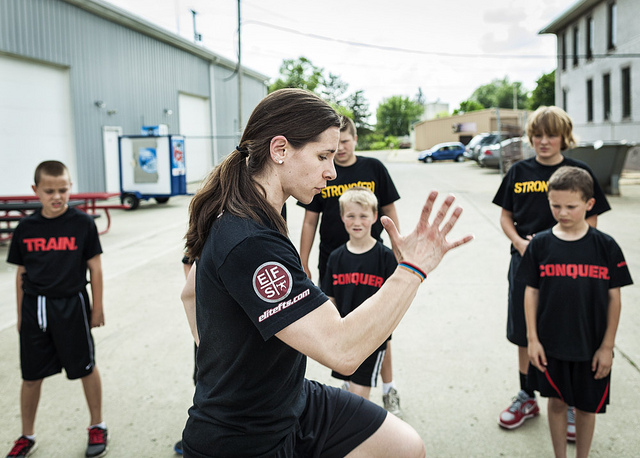
For years, coaches have been failing to attain maximum results when putting their hockey players on an off-ice conditioning program. Much of this comes from misunderstandings. Typically, an unknowing coach will put far too much emphasis on aerobic training despite its near uselessness in hockey specific conditioning. For example, timed miles, which I have performed as a player and have seen many head coaches require that their players perform, have very little transition to a hockey player’s game related physical preparation. There is a better way—high intensity interval training.
High intensity interval training (HIIT) is training at all out intensity for a short interval of time followed by an interval of rest or decreased intensity. It is effective for hockey specific conditioning because it simulates a shift during the actual athletic competition. If your players train to “go all out” for 30–45-second intervals, they’ll be able to replicate the effort on the ice for a full 30–45-second shift. This is because their central nervous system, legs, core, and the rest of their bodies are used to a strenuous workload for that specific period of time.
The Workout: “Hockey Game” Simulation Intervals
Here’s the deal. Split the team into three groups or three lines as used in games. The first “shift” will be the first line working while lines two and three rest. The second “shift” will be line two working while lines one and three rest and so on. There are three, 15-minute periods (or the duration of your periods/games).
Warm up
Make sure that your players warm up properly before they train. Start off with a warm-up lap or some light jump rope movements to get the blood flowing throughout the entire body. Continue the warm up with butt kicks, high knees, body weight lunges, and half speed sprints for 15 yards in order to prepare their muscles for the work to come. Please keep in mind that the players shouldn’t stretch their muscles until they’ve properly warmed up. Doing so could lead to pulled or torn muscles and other injuries.
Sample workout
All work should be performed at full speed. The “shifts” or intervals are 30 seconds of work with 60 seconds of rest.
Period 1
First shift (15:00–13:30 includes all three lines), prisoner squats
Second shift (13:30–12:00), mountain climbers
Third shift (12:00–10:30), burpees
Fourth shift (10:30–9:00), push-ups
Fifth shift (9:00–7:30), sit-ups
Sixth shift (7:30–6:00), squat jumps
Seventh shift (6:00–4:30), jumping jacks
Eighth shift (4:30–3:00), split squat jumps
Ninth shift (3:00–1:30), wide outs
Tenth shift (1:30–0:00), high knees with up/downs (football style)
Intermission, three minutes (or the duration of the intermission during your team’s games)
Second period: Repeat or switch exercises.
Third period: Repeat or switch exercises.
For some variation, allow the lines to “double shift” and go every other “shift” (work for 30 seconds, rest for 30 seconds) as your better players may do at the end of a game.
As the weeks/workouts go on and your players get in better shape, allow the shifts to go to 45 seconds to one minute. If your players aren’t ready for 30 seconds, start with a shorter interval and work up to a longer “shift.”
Hopefully, coaches reading this article will come out of the dark ages and stop having their players do endless “cardio.” It’s time to optimize conditioning for hockey players in order to maximize on-ice performance.
Elitefts.com strives to be a recognized leader in the strength training industry by providing the highest quality strength training products and services while providing the highest level of customer service in the industry. For the best training equipment, information, and accessories, visit us at www.EliteFTS.com.








